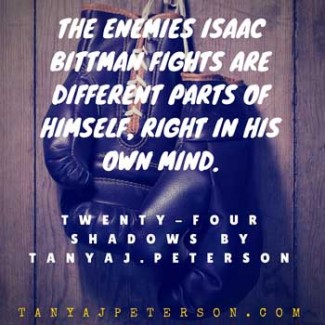DID Can Make Someone His Own Worst Enemy
To have dissociative identity disorder (DID) is quite often to be one’s own worst enemy. Everyone has his/her internal dialogues and arguments and criticisms; indeed, many of us are often our own worst enemies. Dissociative identity disorder puts an intense twist on the concept. Imagine wrestling with yourself, even battling yourself, but that self isn’t actually you. But it is you at the same time. Sound confusing? It is very confusing, both for outsiders to grasp and for the people who live with it.
What Is Dissociation?
Dissociative identity disorder is one of the most misunderstood of all mental illnesses. Formerly called multiple personality disorder, DID is a mental disorder that involves severe dissociation, or separating from one’s main consciousness or awareness. Dissociation ranges from losing track of reality during daydreaming (we all do this) to completely losing your sense of self, as people living with DID do.
What Is It Like to Live with Dissociative Identity Disorder?
To live with dissociative identity disorder is to live with many different parts of your own self. To begin to understand this confusing disorder, imagine:
- Not remembering chunks of time, from short spans of minutes to very long spans of days, weeks, or more
- Suddenly becoming aware of the world around you and not knowing where you are, how you got there, what you’ve been doing, or what things might have happened to you
- Listening to people tell you that you said or did something but having no idea what they’re talking about
- Finding things in your closet or around your home that, supposedly, you purchased, but you have no recollection of doing so
- Encountering people who know you and talk about having done things with you but you have no idea who they are.
“Twenty-Four Shadows” – A Book Bringing DID Into the Light
 Isaac Bittman is a character in the novel Twenty-Four Shadows. He lives with DID, and he experiences all of these things and more. The extreme dissociations can fill him with anxiety and dread, and he hates what are known as switches, the change that happens upon dissociating from one’s consciousness and experiencing the world from a different perspective. He metaphorically fights against them. He’s his own worst enemy.
Isaac Bittman is a character in the novel Twenty-Four Shadows. He lives with DID, and he experiences all of these things and more. The extreme dissociations can fill him with anxiety and dread, and he hates what are known as switches, the change that happens upon dissociating from one’s consciousness and experiencing the world from a different perspective. He metaphorically fights against them. He’s his own worst enemy.
To a person living with DID, it can very much feel like he/she is his/her own worst enemy. It can feel like someone else is taking over one’s body—one’s entire being—and doing with it what they please. It’s a natural feeling for someone to want to fight these other parts of him/herself and make them go away. That creates even more animosity and contributes to the own-worst-enemy feeling.
Twenty-Four Shadows seeks to reduce the confusion about DID. The novel realistically tells the story of family man Isaac Bittman, his wife and son and their lives following Isaac’s diagnosis. Isaac is confused, and he is very much his own worst enemy. Will he always have to fight himself and his alternate identities?
What Happens When a Person with DID Switches Identities?
In the following video, I give some examples of what can happen during a switch of identities (identity alteration) and why it makes sense that people are their own worst enemies about it.
This article was written by:
 Tanya J. Peterson is credentialed as a Nationally Certified Counselor and has personal experience with mental health care, as a novelist and as a columnist. Tanya J. Peterson uses writing to increase understanding of and compassion for people living with mental illness. She also writes the Anxiety-Schmanxiety blog at HealthyPlace. You can purchase the paperback version of Twenty-Four Shadows here and the kindle version here.
Tanya J. Peterson is credentialed as a Nationally Certified Counselor and has personal experience with mental health care, as a novelist and as a columnist. Tanya J. Peterson uses writing to increase understanding of and compassion for people living with mental illness. She also writes the Anxiety-Schmanxiety blog at HealthyPlace. You can purchase the paperback version of Twenty-Four Shadows here and the kindle version here.
To be a guest author on the Your Mental Health Blog, go here.
APA Reference
Peterson, T.
(2016, May 4). DID Can Make Someone His Own Worst Enemy, HealthyPlace. Retrieved
on 2025, November 29 from https://www.healthyplace.com/blogs/yourmentalhealth/2016/05/did-can-make-someone-his-own-worst-enemy